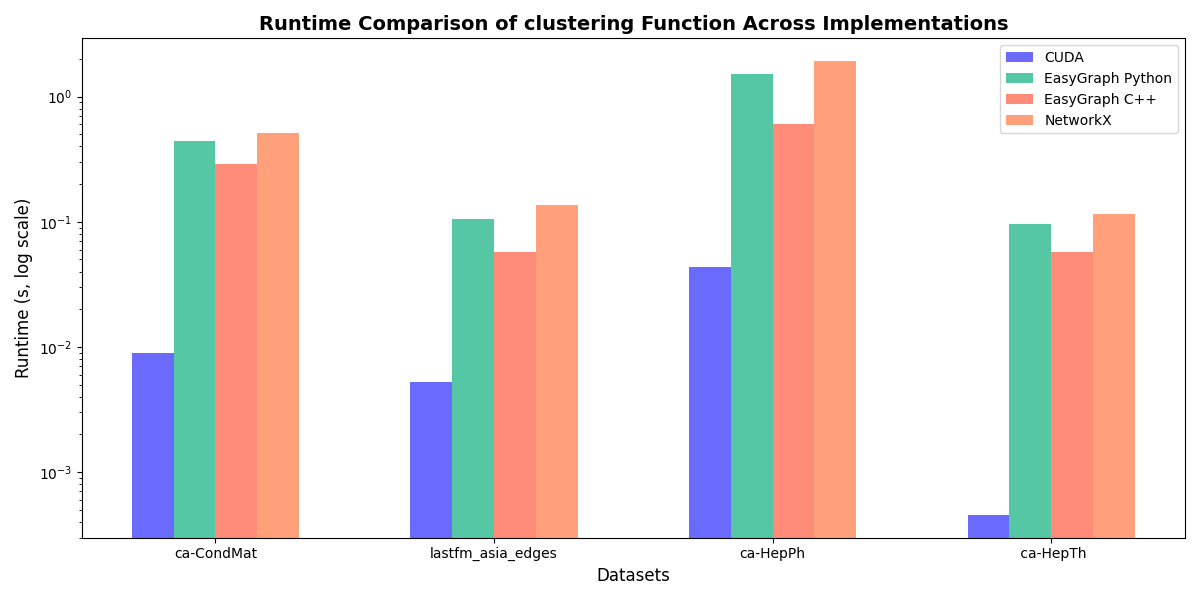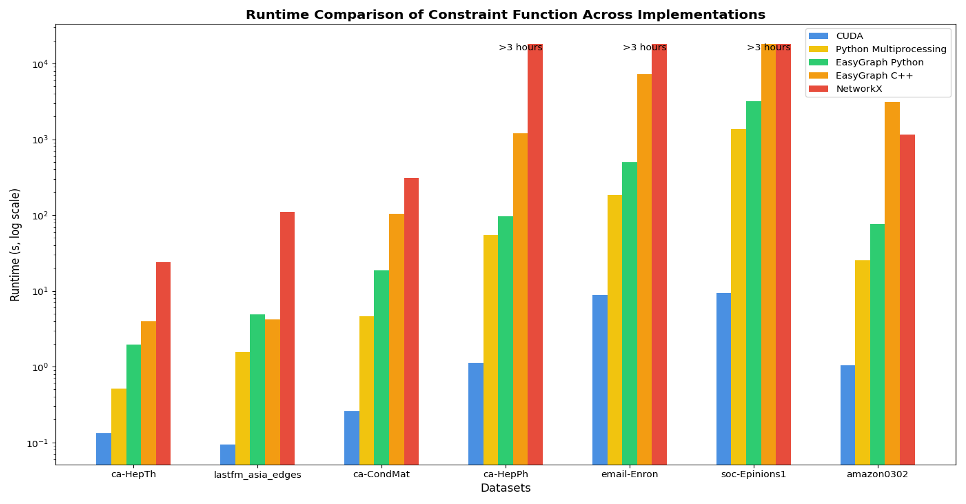EGGPU#
Overview#
EGGPU is a GPU-accelerated network analysis library that supports essential functions such as betweenness centrality, k-core centrality, and single-source shortest path. Built on top of the EasyGraph library, EGGPU delivers a user-friendly Python API while achieving remarkable speedups for large-scale network analysis.
EGGPU is engineered with a three-layer architecture:
User Interface Layer: Developed in Python, this layer offers intuitive and easy-to-use APIs for end users.
Middleware Layer: Constructed in C++, this layer shares memory space with the Computation Layer and serves as the binding agent. It also provides a graph container responsible for graph loading, storage, and format conversion.
Computation Layer: Implemented in CUDA C/C++, this layer primarily executes the GPU-based network analysis functions, including betweenness centrality, k-core centrality, and SSSP.

Installation#
On Linux#
git clone --recursive https://github.com/easy-graph/Easy-Graph
export EASYGRAPH_ENABLE_GPU="TRUE"
pip install ./Easy-Graph
On Windows#
% For Windows users who want to enable GPU-based functions,
% you must execute the commands below in cmd but not PowerShell.
git clone --recursive https://github.com/easy-graph/Easy-Graph
set EASYGRAPH_ENABLE_GPU=TRUE
pip install ./Easy-Graph
Benchmarking and Performance Evaluation#
Our experiments were conducted on a machine equipped with a 12th Gen Intel Core i9-12900K CPU (16 cores, 24 logical processors) and an NVIDIA GeForce RTX 4090 GPU (114 SMs, 1536 max threads per SM, GPU clock speed: 2520.0 MHz, memory clock speed: 10501.0 MHz). The CUDA-based implementations demonstrated significant acceleration, as shown in the benchmark results below.

|

|
Examples#
We provide a comprehensive guide to EGGPU’s GPU-accelerated functions within the EasyGraph ecosystem, demonstrating both native NVCC compilation of CUDA kernels and seamless invocation via our Python API.
import easygraph as eg
def add_weighted(G):
G.add_edges(
[(0,1),(0,2),(0,3),(1,2),(1,3),(1,5),(2,3),(2,4),(3,5),
(5,6),(5,8),(6,7),(6,8),(7,8)],
edges_attr=[
{'weight': 1},{'weight': 3},{'weight': 2},{'weight': 1},
{'weight': 2},{'weight': 4},{'weight': 2},{'weight': 1},
{'weight': 2},{'weight': 1},{'weight': 2},{'weight': 4},
{'weight': 3},{'weight': 3},
]
)
G_gpu = eg.GraphC()
add_weighted(G_gpu)
print(eg.constraint(G_gpu, weight="weight"))
"""
[0.73650971 0.62929697 0.58577806 0.64878836 0.4685571 1.
0.83901931 0.78530837 0.94929847]
"""
print(eg.effective_size(G_gpu, weight="weight"))
"""
[1.76388889 2.54166667 2.94047619 2.70833333 3.16666667 1.
1.94791667 2.09375 1.10714286]
"""
